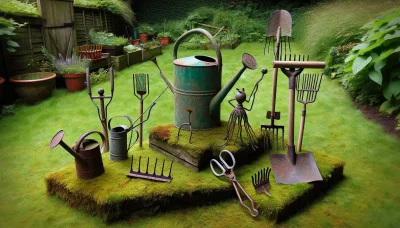Pyrus malus Quiz
Test Your Knowledge
Question of
Understanding Pyrus Malus: The Apple Tree
The botanical name Pyrus Malus refers to the common apple tree, which is known for its sweet fruit, the apple. This name is sometimes used in scientific contexts and literature to specify the species of apple trees that are widely cultivated across the globe. The term "Pyrus Malus" is derived from Latin, with "Pyrus" indicating the pear genus to which it was once thought to belong, and "Malus" meaning apple. Over time, the common name "apple tree" has become more prevalent in everyday language, simplifying communication and identification of this beloved fruit-bearing tree.
The History of Pyrus Malus
The history of Pyrus Malus, commonly known as the apple tree, is both rich and ancient, tracing back thousands of years across various cultures around the world. Originating from Central Asia, specifically in the mountains of Kazakhstan, apples have played a significant role in human history, not just as a source of food but also in mythology, religion, and folklore. The apple tree was likely first domesticated several thousand years ago, with its cultivation spreading rapidly across Europe and Asia. Through the Silk Road and other trade routes, apples found their way into many countries, where different varieties were developed through natural selection and breeding. Today, there are thousands of apple varieties, each with its unique taste, color, and texture, underscoring the fruit's adaptability and enduring appeal. The apple tree's journey from the wild forests of Kazakhstan to becoming a beloved staple in many diets around the world is a testament to its importance and resilience through human history.
Varieties of Pyrus Malus
- Honeycrisp: Known for its sweet taste and crisp texture, Honeycrisp apples are perfect for eating fresh.
- Granny Smith: Famous for its green skin and tart flavor, Granny Smith apples are ideal for baking and making pies.
- Red Delicious: Easily recognizable by its deep red color, Red Delicious apples are sweet and best enjoyed fresh.
- Golden Delicious: A versatile apple with a yellow exterior, offering a sweet flavor that's great for both eating raw and cooking.
- Gala: With a mild and sweet taste, Gala apples are great for snacking and salads due to their thin skin and crisp flesh.
- Fuji: Originating from Japan, Fuji apples are large, dense, sweet, and very crunchy, making them popular for eating fresh.
- Braeburn: Known for its spicy-sweet flavor, the Braeburn has a firm texture that holds up well in cooking.
- McIntosh: A classic apple with a tender, white flesh that's slightly tart, making it perfect for applesauce or eating raw.
How to Plant and Care for Pyrus Malus
To successfully plant and care for Pyrus Malus, commonly known as apple trees, start by selecting a location that receives full sunlight and has well-draining soil. Plant your apple tree during the dormant season, in late fall or early spring. Dig a hole twice as wide and the same depth as the root ball, positioning the tree so that the graft point is above soil level. Backfill the hole with soil and water thoroughly. For watering, provide young trees with regular, deep watering to establish roots. Mature trees require less frequent but still deep watering, especially during dry periods. Mulch around the base to retain moisture and control weeds, but keep the mulch a few inches away from the trunk to prevent rot. Prune annually during winter to remove dead or overcrowded branches and to promote healthy growth. Monitor for pests and diseases and treat accordingly to ensure your apple trees thrive for years to come.
Common Pests and Diseases Affecting Pyrus Malus
- Apple Scab - Caused by the fungus Venturia inaequalis. To manage, apply fungicides early in the season and prune trees to improve air circulation.
- Codling Moth - Larvae that bore into apples, ruining the fruit. Use pheromone traps to monitor and reduce the population, and consider applying appropriate insecticides.
- Apple Maggot - Flies lay eggs in the fruit, and the larvae feed inside. Hang red sphere traps in trees to catch adult flies and remove any affected fruits to reduce future populations.
- Fire Blight - A bacterial disease that causes branches to appear scorched. Prune infected branches well below the infected area and sterilize tools between cuts to prevent spread.
- Powdery Mildew - A fungal disease that coats leaves in a white, powdery substance. Improve air circulation through pruning and apply sulfur-based fungicides to protect new growth.
- Apple Rusts - Caused by various fungi, leading to leaf spots and fruit damage. Remove galls from juniper trees nearby, as they can be a source of spores, and apply fungicides early in the season.
- Fruit Tree Borers - Insects that tunnel into the trunk and branches. Keep trees healthy to resist damage and consider applying insecticides to the trunk and branches in late spring.
Pruning and Maintenance Tips for Pyrus Malus
Pruning and maintaining apple trees (Pyrus Malus) is essential for ensuring their health, growth, and productivity. Begin by pruning during the dormant season, late winter through early spring, to promote vigorous growth. Remove any dead, diseased, or damaged branches to prevent the spread of disease and pests. Thin out the canopy to allow sunlight and air to penetrate, improving fruit quality and reducing disease risk. Keep the tree's base clear of grass and weeds to minimize competition for nutrients and water. Regularly check for signs of pests or disease and address promptly to maintain the health of your apple tree. With consistent care, your apple tree will reward you with bountiful harvests for years to come.
Harvesting and Using Pyrus Malus
Harvesting apples, or Pyrus Malus, involves picking the fruit from the trees when they are ripe, which is typically determined by their color, aroma, and ease of separation from the branch. Once harvested, apples offer a versatile range of uses, from fresh consumption to various culinary applications. It's important to handle them gently to prevent bruising and to store them in a cool, dry place to maintain their freshness. Below are some popular ways to enjoy harvested apples.
| Use | Description |
|---|---|
| Eating Fresh | Apples are a delicious and healthy snack when eaten raw. |
| Baking | Apples can be baked into pies, crisps, and other desserts. |
| Making Cider | Fresh apples can be pressed into juice or fermented to make cider. |












